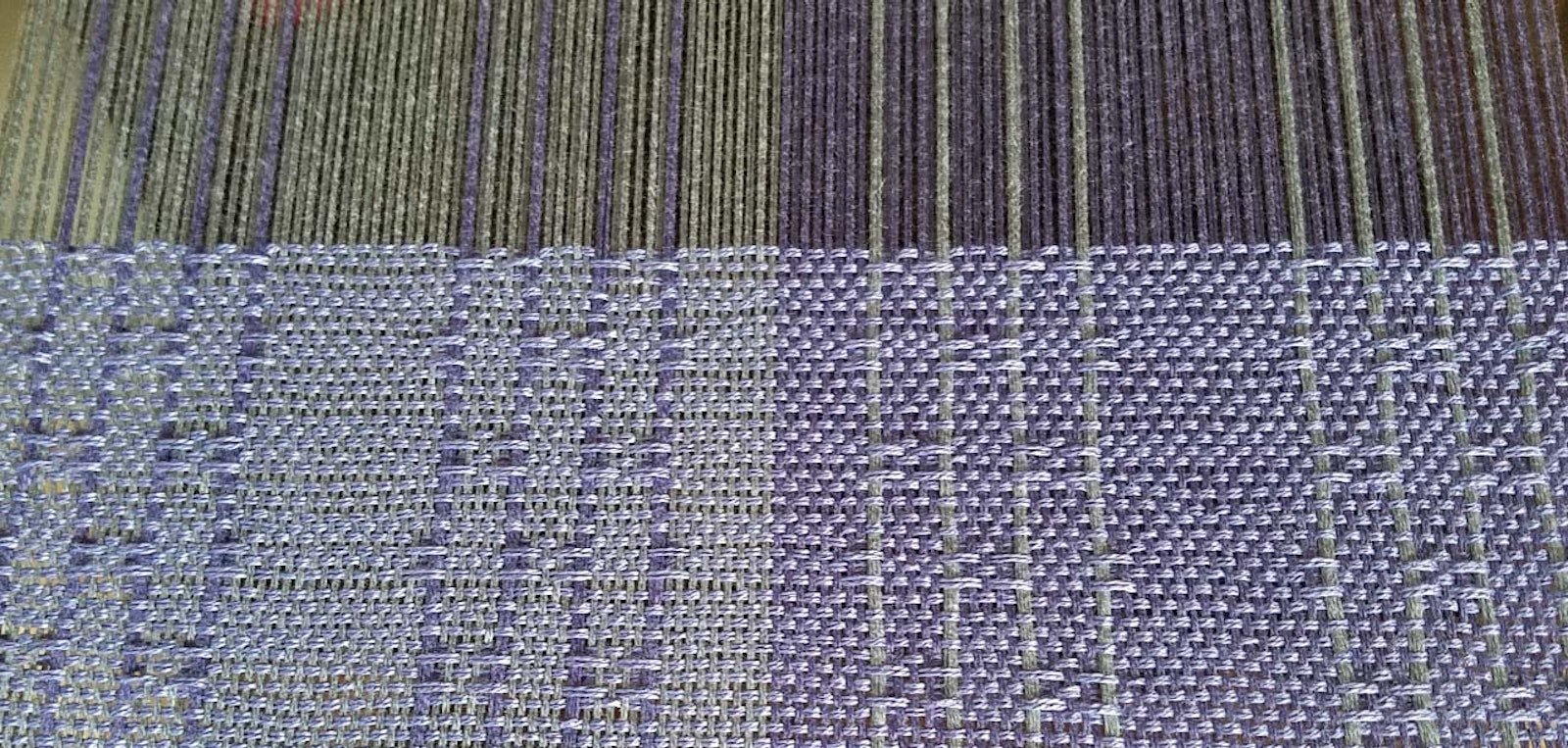When my latest beginning weaving students came in to finish their final towels last week (I have them warp three times during the class.), I had to conjure up some dialogue from “The Wizard of Oz.” Remember what the wizard bellowed when Dorothy and the gang noticed movement in the corner? “Pay no attention to the man behind the curtain…” or something like that.
No good could come from my students seeing what a mess I had made, so in my scariest voice, I said, “PAY NO ATTENTION TO WHAT’S HAPPENING ON MY LOOM TODAY!” After I thought it over, I decided to use my misfortune to demonstrate what can happen when playing fast and loose with the warping techniques I had spent eight four-hour classes teaching them.

Karen's rescued warp awaiting its weaving destiny.
A series of very bad decisions had led to a tangled four-yard supplementary warp that otherwise was the perfect fiber, color and size. If I had more of the yarn, I would have thrown it out and begun again, but foregoing the calculations to find out whether the cone had sufficient yardage was what started me down this ugly brick road in the first place.
Six inches into winding the warp, I realized the cone of 5/2 cotton wasn’t going to make it to 24 inches wide. With a deadline looming for the project, there was no time to order more. I scrounged around my stash and came up with a full cone of 8/2 Tencel in a similar color. Unfortunately six-inch stripes wouldn’t work in this design.
I devised a work-around. I tied off the cotton warp chain and wound six inches of the Tencel, making another warp chain. I wound the rest of the warp end-and-end, but still ran out of the cotton about 1 ½ inches short. So I wound three quarters of an inch of Tencel on the end of that chain, and a separate three-quarter inch Tencel chain for the other edge.
Now, I thought, I’ll just sley all these chains through a reed mixing the two separate warps and continuing with the properly wound sections. The loom I’m using has no second beam, so this warp would be suspended off the back with weights. No problem, I could wind it temporarily onto the warp beam of my Baby Wolf, straightening all the warp chains as I went. Then I could gradually unwind the warp from the beam and bind it all neatly with choke ties. Rather than hand-pick the cross, I decided I would hang the reed over the ground warp lease sticks and thread back-to-front from it. It sounded feasible.
Then, BIG mistake number…well I’ve lost count. Thinking the warp was only going onto the Baby Wolf beam temporarily, I decided to simply crank it on…no paper, no sticks, no worries the warp was a bit wider than the apron rod. I suspect you can guess the rest. I am just stubborn enough (cue hysterically laughing husband) that I eventually untangled every bit of that warp and got it tied neatly into bundles ready to thread, albeit a little shorter than the original four yards. It’s still lying in a pile on my work table, as my loom has no castle from which to suspend it, and I’m trying to figure out how to hang the reed back there.
Needless to say, the deadline will probably be missed, but that’s another story. My point in sharing this woeful tale is to remind myself and others there is usually a good reason why we were taught particular warping or weaving techniques. As Madelyn van der Hoogt says in the introduction to her Weaving Well video, “We all stand on the shoulders of the weavers before us, and all the tricks and tips we have come from somewhere else.” I would add, “Because they probably learned the hard way.”
No matter how long you’ve been weaving, when you’re tempted to cut a few corners or sidestep a few rules simply because you’re in a hurry or “you know what you’re doing,” picture your teacher standing over your shoulder.
I plan to spend more quality time with Madelyn over my shoulder, via her warping and Weaving Well videos, before I thread those heddles. It never hurts to review the basics.


